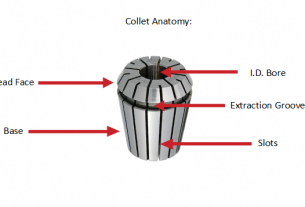Are you tired of constantly replacing your tools due to damage from exposure to the elements? Tool covers are a simple yet effective solution for protecting your equipment and prolonging their lifespan. With a variety of options available on the market, finding the right tool cover for your needs can be overwhelming. In this article, we’ll explore the benefits of using tool covers, the different types available, and how to choose the best one for your tools.
Why Use Tool Covers?
Exposure to moisture, dust, and sunlight can cause significant damage to your tools over time. Rust, corrosion, fading, cracking, and warping are common issues that can lead to reduced functionality or even render them useless. Tool covers provide an excellent defense against these hazards by shielding your equipment from the elements.
Additionally, storing your tools in a covered environment reduces the risk of theft or loss. A sturdy tool cover acts as a deterrent against unauthorized access and safeguards your investment.
Types of Tool Covers
1. Canvas Covers: Made from heavy-duty canvas material, these covers are durable and long-lasting. They are resistant to water, mildew, and abrasion, making them ideal for outdoor use. Canvas covers come in various sizes and shapes to fit different types of tools.
2. Plastic Covers: These lightweight covers are easy to handle and offer excellent protection against moisture and dust. They are available in various thicknesses and sizes and can be used for short-term or long-term storage.
3. Leather Covers: Leather tool covers are stylish and sophisticated while providing top-notch protection against weathering. They are ideal for hand tools such as hammers, wrenches, pliers, etc., and add a touch of elegance to any workshop.
4. Nylon Covers: Nylon tool covers offer superior resistance against harsh elements such as extreme temperatures or UV radiation. They are lightweight yet strong enough to withstand heavy-duty use and can be customized to fit any tool size.
Choosing the Right Tool Cover
When selecting a tool cover, consider the following factors:
1. Size: Ensure that the tool cover fits your equipment snugly to prevent dust or moisture from seeping in.
2. Material: Choose a material that suits your storage environment and offers adequate protection against hazards.
3. Durability: Look for covers that are designed to last long and resist wear and tear.
4. Customization: Some covers come with customization options such as logos or imprints, which can add a personal touch to your workshop.
5. Cost: While it’s tempting to opt for cheaper alternatives, investing in high-quality covers will save you money in the long run by prolonging the lifespan of your tools.
Conclusion
Tool covers are an essential accessory for any workshop, offering protection against environmental damage and theft. With various types available on the market, finding the right one for your needs can be challenging. Consider the factors mentioned above when choosing a cover, and invest in high-quality options that offer durability and customization options. Keep your tools safe and secure with sturdy tool covers today!
References:
1. “How To Choose The Right Tool Covers,” The Spruce Crafts, https://www.thesprucecrafts.com/how-to-choose-the-right-tool-covers-4584860
2. “The Importance of Protecting Your Tools with Covers,” Los Angeles Times, https://www.latimes.com/business/story/2021-08-20/the-importance-of-protecting-your-tools-with-covers
3. “Tool Covers,” Wikipedia, https://en.wikipedia.org/wiki/Tool_cover




